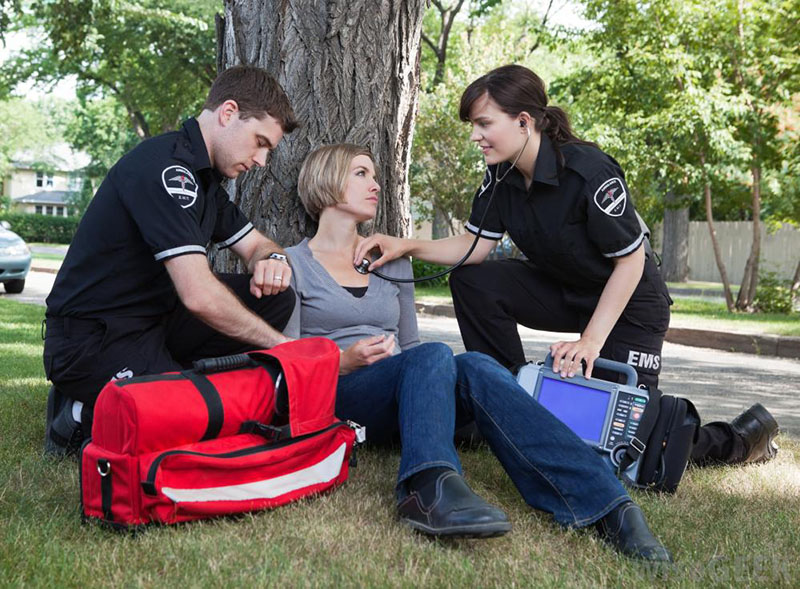The field of emergency medical care (EMS) is a noble and vital career that offers a lucrative job that is focused on the saving of lives and delivering critical care. It’s a field that offers tremendous growth potential and a high demand for qualified professionals. This article will guide you through all the steps needed to become an EMT or paramedic. We’ll also go over various training options available, such as the approved by the DSHS EMS course.
Understanding the role of EMTs and Paramedics:
Emergency Medical Technicians commonly referred to paramedics or EMTs are the primary response in times of emergency. They offer immediate assistance. They are skilled in assessing the health of patients, providing vital medical treatments and transferring patients in a safe manner to medical centers for further care. EMTs, paramedics as well as other medical professionals, play a crucial role in stabilizing a patient in an emergency taking split-second choices, and providing compassion to patients who are suffering. For more information, click Steps to become a Paramedic

Step 1: Become an EMT:
In order to become an EMT you will need to be able to complete a variety of education and training courses. They can vary based on the level of certification you want to attain. There are three levels to EMT Certification are offered:
1. EMT-Basic (EMT-B) It is the first-level certification that will require between 100 and 150 hours of education. EMT-Bs receive training in basic medical procedures, such as CPR and blood management and the basics of airway control.
2. EMT-Intermediate (EMT-I) EMT-I demands additional training, and it varies between states. This level can be merged with EMT B in some states, but it may also require training of 200-400 hours. It may also require intravenous treatment and expanded medical knowledge.
3. EMT-Paramedic (EMT-P) The most prestigious degree of EMT certification, EMT-P requires extensive training, typically running between 1,800 and 1,000 hours. Paramedics are trained to perform advanced medical procedures such as administering medication, reading EKGs, and managing airways.
Step 2: Requiring paramedic certification
In order to become a Paramedic, you first need to pass the EMTB or EMTI level and then gain some practical experience. Then, you’ll be able to apply for an ambulance course that typically takes anywhere from one to two year to complete. Through the rigorous training, you’ll be exposed to the most advanced medical subjects. You’ll also gain the skills and knowledge required to tackle emergency circumstances.
Step 3: Looking into EMT Optional Training:
You are able to choose among a number of EMT classes, based upon the level of your certification. Community colleges and medical trade schools typically offer EMT training for all levels of certification. They combine teaching in the classroom with hands-on experience in clinical and field environments.
Colleges and universities offer EMT programs at the level of EMT/Paramedic If you’re looking for an in-depth and comprehensive EMT program that can lead to an education at the college level. These courses provide an thorough understanding of emergency medical services, and offer you a more comprehensive view of the medical care of patients and decision-making.
Step 4: Ensure that DSHS-approved EMS training
If you’re aspiring to become EMTs and paramedics, it is essential to make sure the training program you choose is DSHS approved. The Department of State Health Services (DSHS) has the authority to approve EMS courses for training to ensure that they meet high requirements for education and competency. Enrolling in a DSHS-approved EMS course will ensure that you receive top-notch training and meet the certification requirements.
A career in the field of EMT or paramedic can be highly rewarding and well-respected. As first responders, EMTs and paramedics play important roles in saving lives and providing emergency medical assistance in situations. To embark on this life-saving task, EMTs and Paramedics are required to complete the necessary training and education programs. Individuals can select from a number of EMT programs, based upon their desired certification level. These include medical schools, community colleges, and university courses.
In addition to considering the choices for training, it is essential to confirm that the selected EMS training program is DSHS certified by DSHS. You can be assured that the course you attend is in compliance with all the requirements to get EMT or paramedic accreditation.
As the demand for skilled emergency medical professionals continues to grow, entering the field of EMS provides a wealth of job opportunities and the possibility of making a an impact on the lives of others. If you begin as an EMT-Basic or aspire to become a paramedic your commitment to providing crucial health care will result in an enjoyable and fulfilling job in emergency medical care.